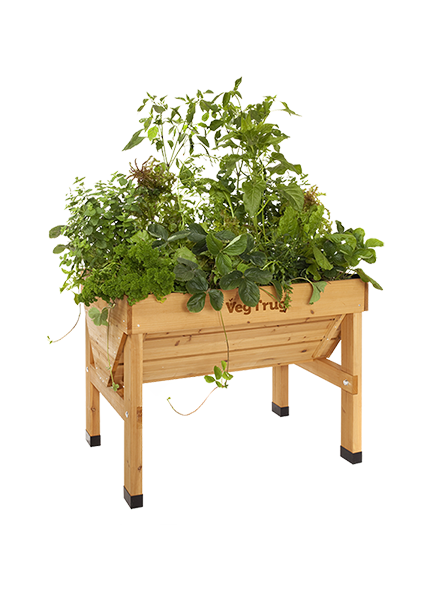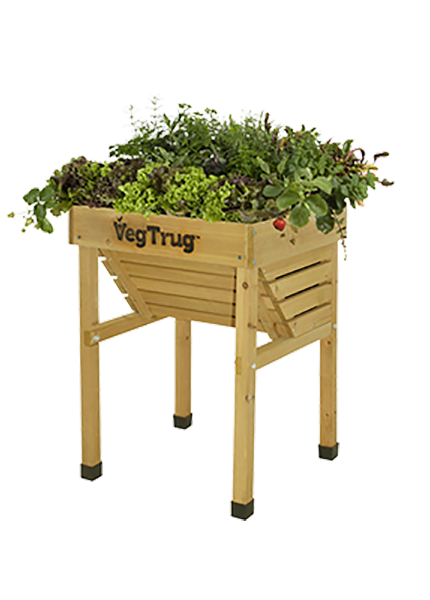Tasty dill is an easy-to-grow herb that is famed as the main ingredient of dill pickle. Its leaves, stalks, flowers and seeds are all edible and used in soups, salads and fish dishes, while the eye-catching yellow flowers attract a host of wildlife including bees and butterflies.
Dill weed, as it’s also sometimes known, has been linked to medicinal uses too and has huge quantities of flavonoids which are known to be beneficial to heart health and cholesterol (although there’s insufficient scientific evidence of dill’s effect on humans). Read below for more on how to grow Dill and enjoy this pretty herb.
You can sow dill seeds straight outdoors in your VegTrug once the frosts have passed. In the UK you can start sowing outdoors in April. But you can also plant them earlier in trays or under cover. Again, if you plant dill in trays, wait until the risk of frost has passed before transplanting them. Dill does best in a sunny area that’s protected from the elements.
To make life easier place your seeds in 1cm deep rows, spread thinly. Dill roots are sensitive and will go to seed early if the roots are damaged when you thin out the young plants. And if you want a regular supply throughout the summer, sow regularly.
The deep v-shape of our classic VegTrug is perfect for dill’s long taproot. When it comes to how to grow dill well, remember to keep the soil moist, particularly in hot climates or seasons. Dill is sensitive to heat, but don’t overwater the soil or let it get waterlogged. Dill also attracts bees naturally and you can even add a Bee Bar to your classic or wall hugger VegTrug planters to encourage solitary non-stinging bees to lay their eggs.
Cutting new leaves regularly will help your dill thrive and can help prevent the plant from flowering too soon.
Dill, like any plant, can have problems with pests and bugs.
While learning how to grow dill, you’ll more than likely find a few butterfly caterpillars taking a bite out of your dill in the early days, but for most people the sight of the stunning black swallowtail butterflies is more than worth it.
Aphids, or greenfly, love the sap on young leaves, and snails and slugs might also make an appearance. A horticultural soap can help with greenfly, or cover the plants top make things difficult for snails and slugs.
The leaves are suitable for fresh use until the flowers start to appear. Once this happens you’ll need to dry the leaves for storage. Make sure your dill is fully dry, then store in an airtight container.
You can also collect the seeds by placing a small bag with holes for air over the flower head and shaking the seeds into it. Leave the bag in place for a week or so before removal.
How to grow dill is part of the VegTrug Grower’s Guide.

